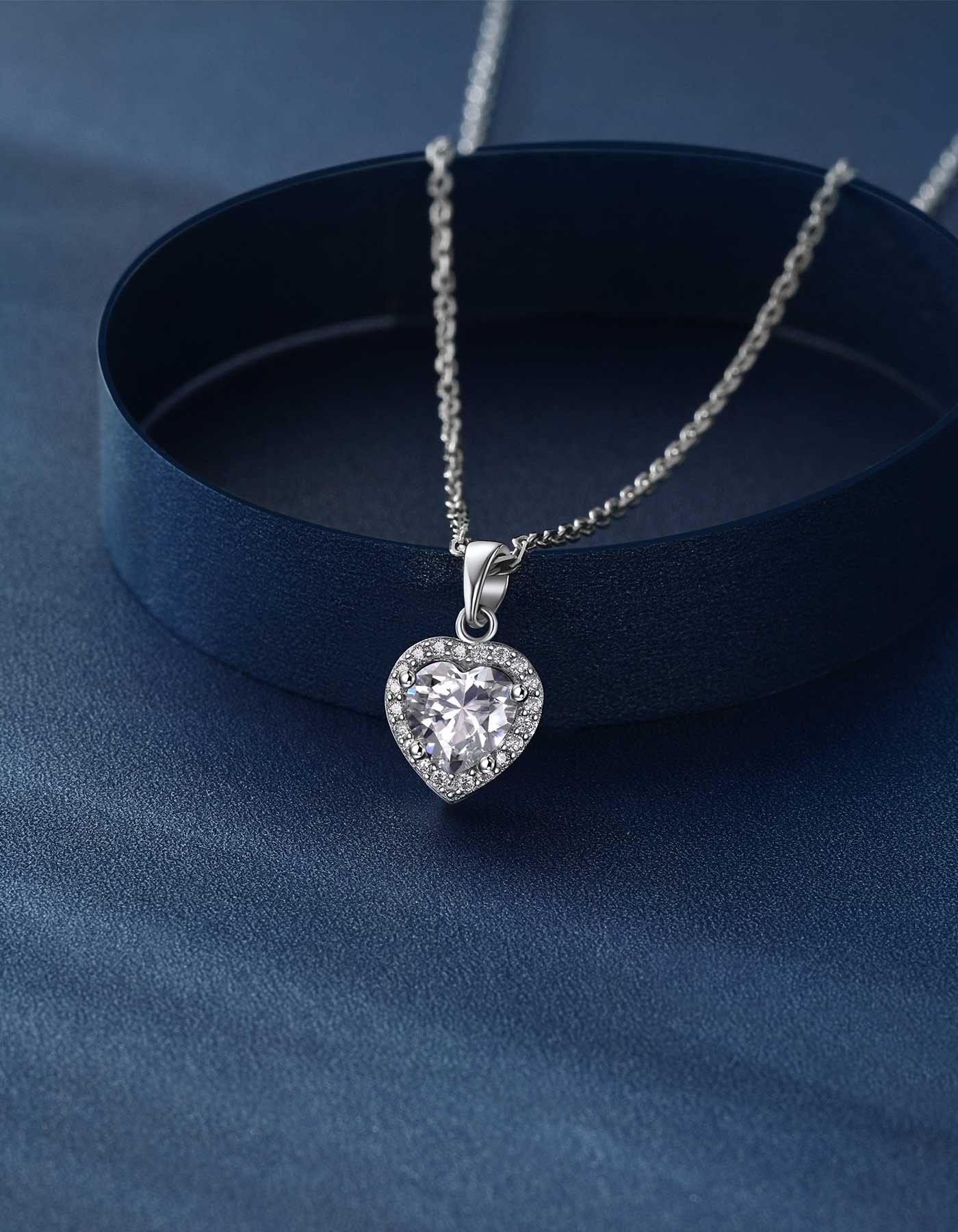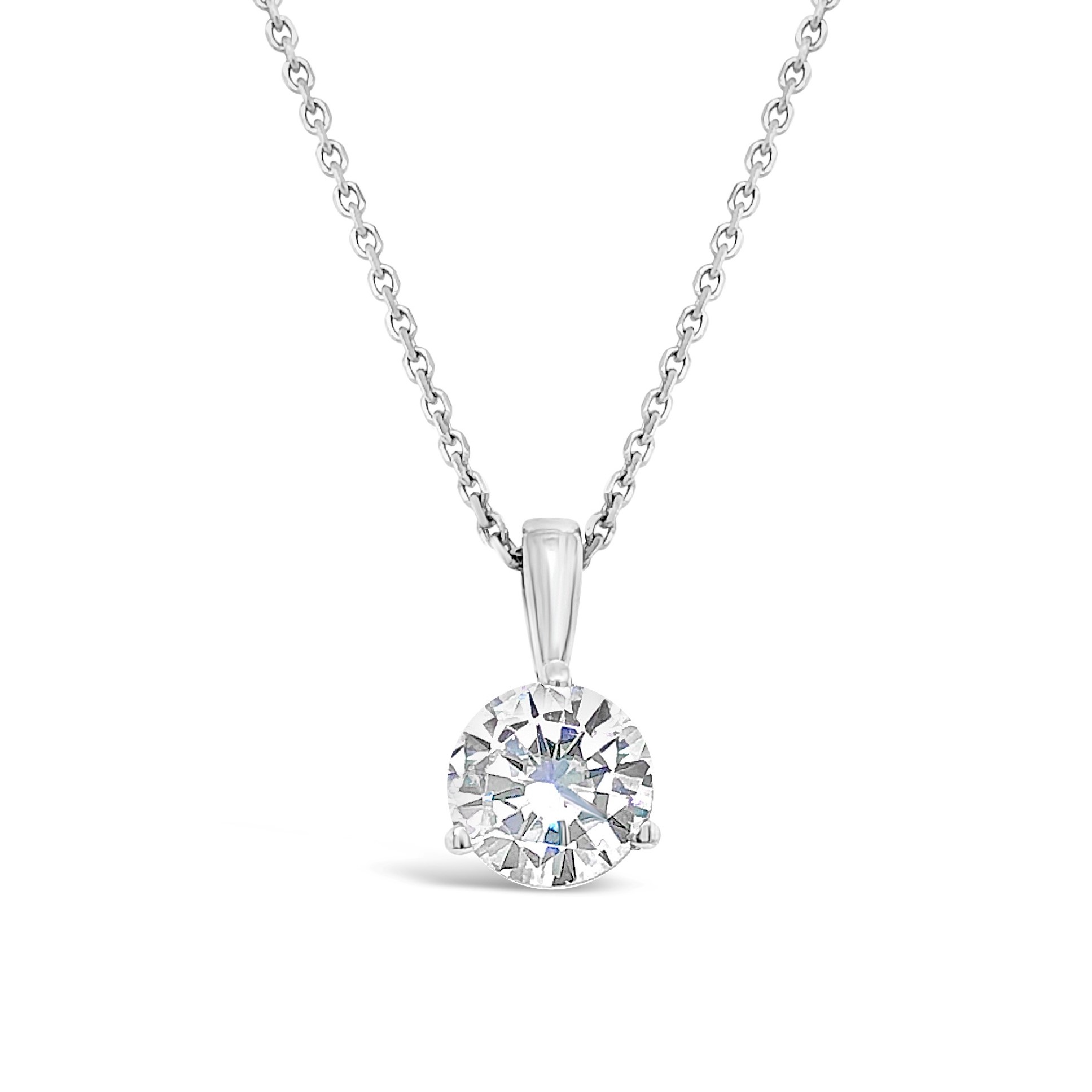How to get knot out of necklace?
How to get knot out of necklace? One of the frustrating challenges jewelry lovers encounter is dealing with knots in necklaces. Knots can make it difficult to wear, store, or untangle a necklace, and often require patience and careful maneuvering to resolve. In this comprehensive guide, we will explore various methods to help you remove knots from necklaces. From using common household items to employing specific techniques, you will learn how to tackle knots and preserve the beauty of your necklaces. Let’s dive into the world of untangling necklaces and unravel the secrets to knot-free jewelry.
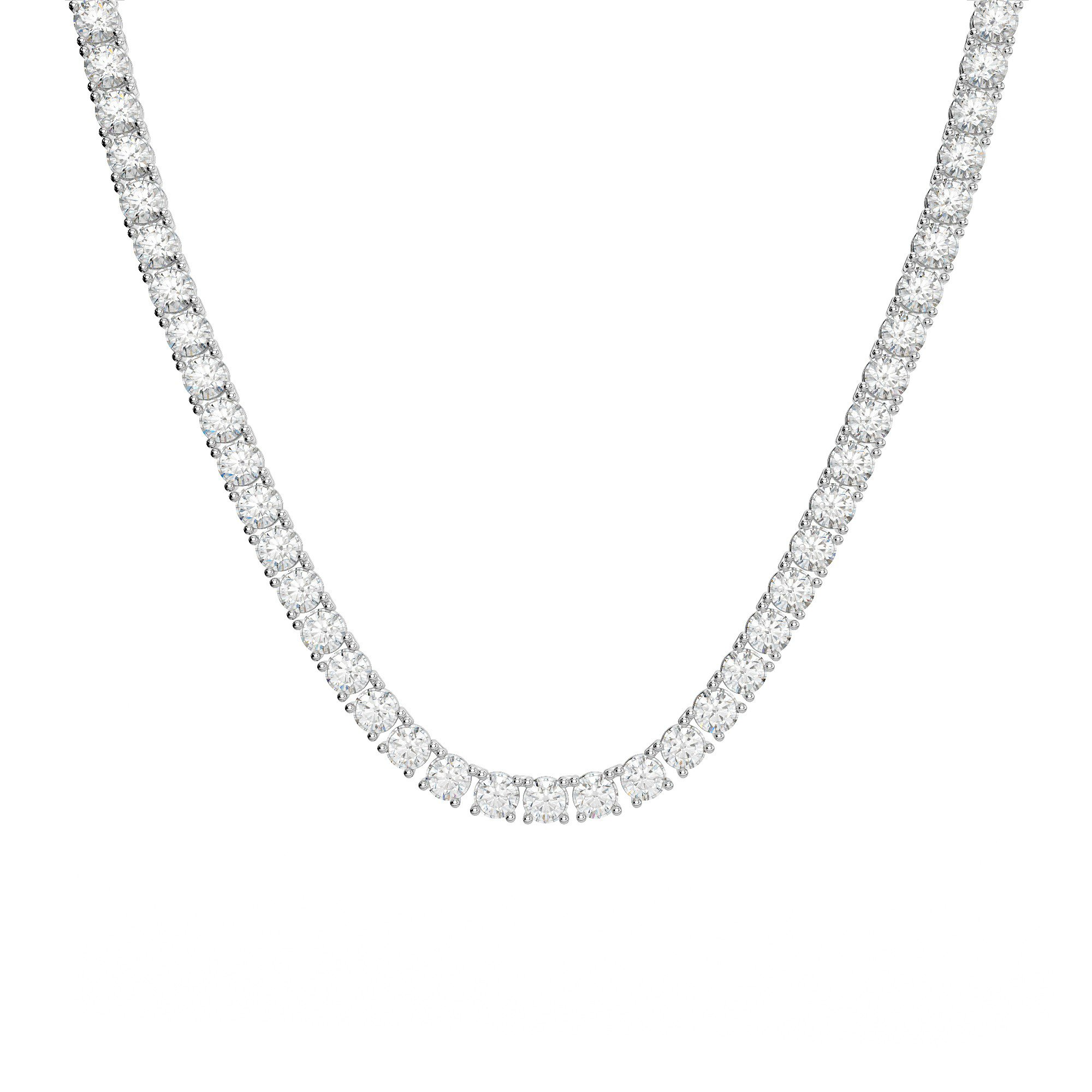
Assessing the Knot:
Before you begin untangling a knot in a necklace, it’s important to assess the situation. Consider the following factors:
- Knot type: Identify the type of knot you’re dealing with. Common knots include slip knots, overhand knots, and interlocking knots. The type of knot may influence the specific untangling method you choose.
- Necklace material: Take into account the material of the necklace, such as metal chains, delicate chains, or beaded necklaces. Fragile materials may require more care when untangling to avoid damaging the necklace.
- Complexity of the knot: Some knots may be simple and loosely tangled, while others may be tightly wound or have multiple strands intertwined. Understanding the complexity will help you determine the appropriate approach for untangling.
Creating a Work Area:
To effectively untangle a knot in a necklace, create a suitable work area as follows:
- Flat surface: Find a clean, flat surface, such as a table or countertop, where you can comfortably lay out the necklace and work on removing the knot.
- Good lighting: Make sure the work area is well-lit, preferably with natural light or a bright lamp, so you can clearly see the details of the knot.
- Optional tools: Prepare small tools such as sewing needles, straight pins, or tweezers, as they can be helpful in certain untangling methods.
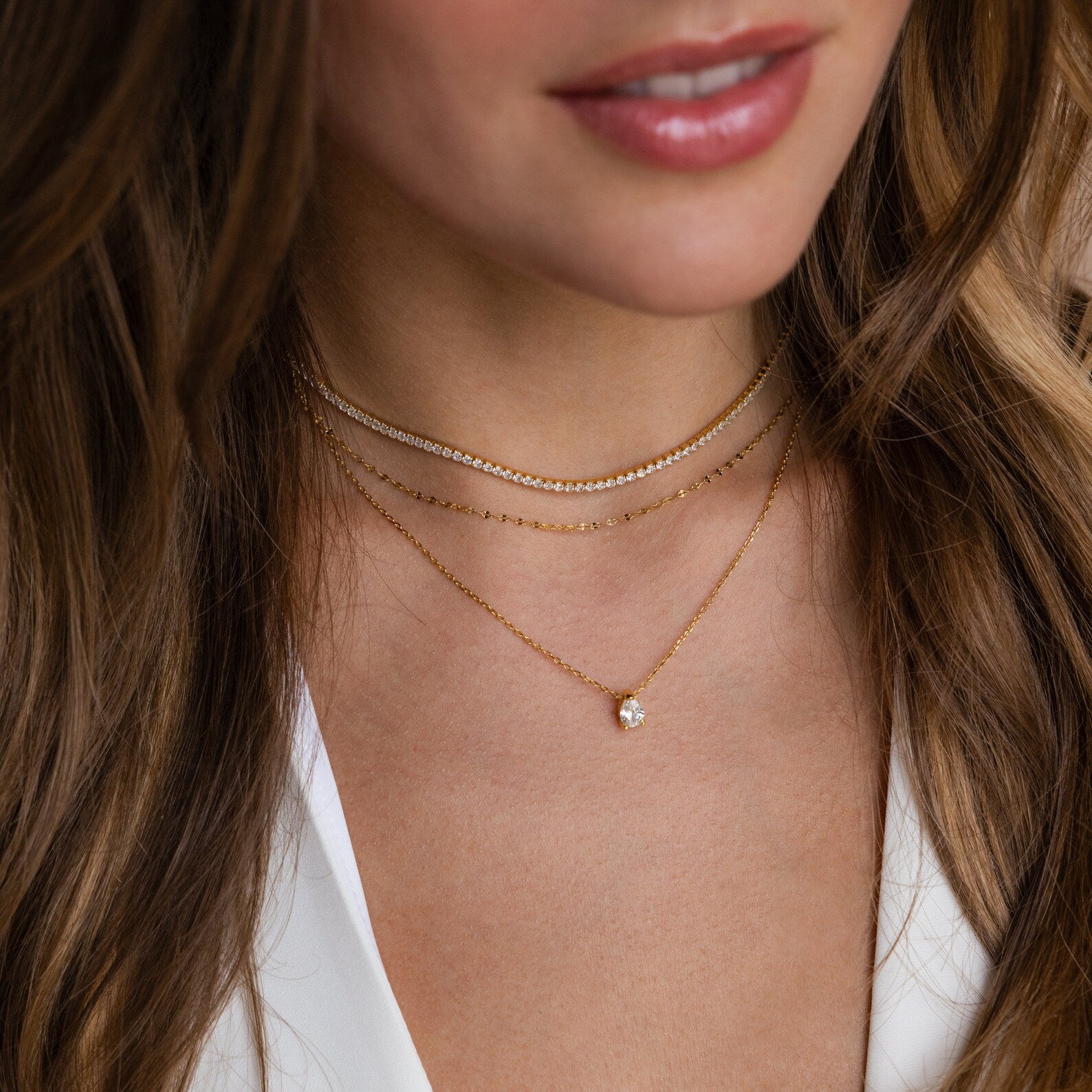
Applying Techniques to Untie Knots:
Now it’s time to apply specific techniques to untangle knots based on their type and complexity:
- Finger Dexterity: Begin by using your fingers to gently manipulate and separate the tangle. Slowly work through the knot, teasing it out strand by strand. Take your time and be patient, as rushing may tighten the knot further.
- Straight Pin Technique: For tight knots, use a straight pin or needle to gently lift and separate individual strands. Insert the pin or needle just above the knot and slowly loosen the strands to unravel the knot.
- Fine Wire or Dental Floss Method: In cases where the knot is too tight to be untangled manually, try sliding a fine wire or dental floss through the center of the knot. Then, carefully twist and maneuver the wire or floss to loosen the knot and untangle the strands.
- Lubrication Technique: Apply a small amount of baby oil, cooking oil, or lubricating spray to the knot. This can help reduce friction and make it easier to untangle the strands. Gently work through the knot using your fingers or other tools.
- Needle and Thread Method: In situations where there are multiple strands or complex knots, thread a thin needle with thread that matches the beaded necklace. Insert the needle through the center of the knot and use it to loop and pull each strand through the knot, untangling it gradually.
Prevention and Necklace Care:
To minimize the risk of future knots and keep your necklaces in good condition, consider the following preventive measures and care tips:
- Necklace storage: Store necklaces individually, hanging or laying them flat in a jewelry box or organizer to prevent tangling.
- Clasp management: Properly fasten clasps when storing necklaces to reduce the chance of knots forming.
- Routine detangling: Regularly inspect and detangle necklaces to prevent knots from becoming more complicated and difficult to remove.
- Delicate handling: Handle necklaces with care, avoiding yanking or pulling forcefully, as it can cause knots to form or damage the necklace.

How to clean necklace
Necklaces are treasured pieces of jewelry that add charm and elegance to any outfit. Over time, necklaces can accumulate dirt, oils, and tarnish, losing their sparkle and luster. Proper cleaning and maintenance are essential to keep your chain necklace looking their best.
Assessing Your Necklace:
Before cleaning your necklace, it’s important to assess its condition and materials. Consider the following factors:
- Material: Determine the type of material your necklace is made of. Common materials include precious metals (such as gold, sterling silver, or platinum), gemstones, crystals, pearls, or delicate materials like silk or fabric.
- Gemstone Vulnerability: If your necklace features gemstones, research their specific cleaning requirements, as different gemstones have varying sensitivity to chemicals and cleaning methods.
- Sturdiness: Assess the overall sturdiness of your necklace. Delicate or intricate necklaces may require more cautious and gentle cleaning methods.
General Cleaning Steps:
For most necklaces, the following general steps can be followed:
- Prepare a Cleaning Solution: Depending on the material of your necklace, you can create a gentle cleaning solution. For precious metals, use a mild dishwashing liquid mixed with warm water. For delicate materials or pearls, use a mild soap specifically formulated for jewelry cleaning. Avoid using harsh or abrasive cleaners, as they can damage the necklace.
- Soak and Agitate: Place your necklace in the cleaning solution and allow it to soak for a few minutes. Gently agitate the necklace in the solution to loosen and remove dirt or debris. Be careful not to cause any further damage or tangling.
- Brush or Wipe: Use a soft-bristled toothbrush, jewelry brush, or lint-free cloth to gently brush or wipe the necklace. Pay attention to intricate areas and chain links, ensuring all surfaces are cleaned. Avoid using excessive pressure, especially with delicate materials or gemstones.
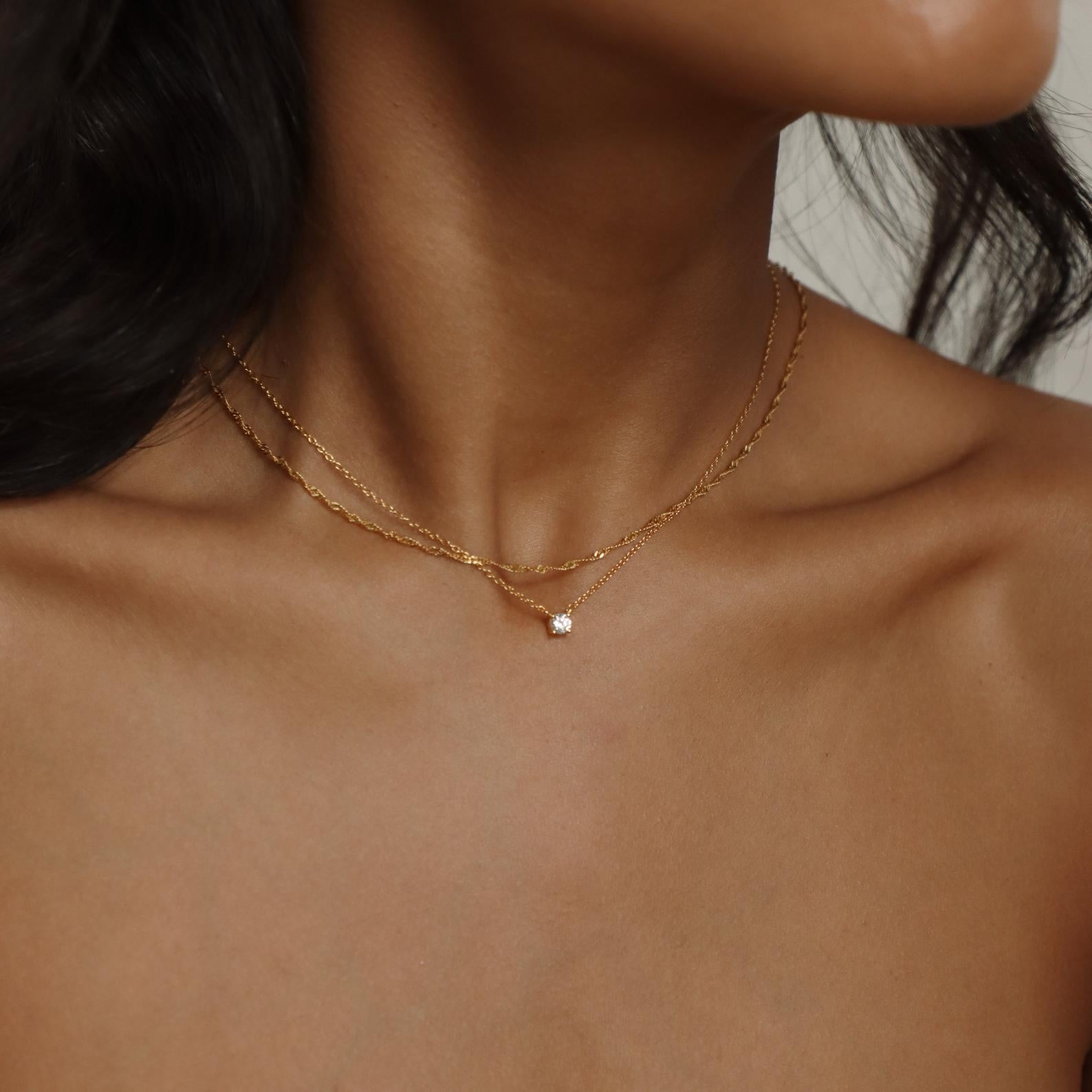
Cleaning Specific Necklace Types:
Here are additional cleaning considerations for specific moissanite necklace:
- Precious Metals: Use a jewelry polishing cloth or a commercial jewelry cleaner specifically formulated for the metal type. Follow the manufacturer’s instructions carefully to ensure safe and effective cleaning. Avoid using abrasive materials or harsh chemicals that can damage the metal’s surface.
- Gemstone Necklaces: Gently clean gemstone necklaces using a soft brush or cloth. For specific gemstones, refer to a gemstone cleaning guide to determine the appropriate cleaning method and any precautions to observe. Avoid using ultrasonic cleaners, steam cleaning, or harsh chemicals unless recommended for the specific gemstone.
Conclusion:
Removing knots from necklaces can be a challenging task, but with patience, the right techniques, and a careful approach, you can restore your necklaces to their original beauty. Assess the knot, create a suitable work area, and carefully apply techniques such as finger dexterity, straight pin method, lubrication, fine wire or dental floss, or needle and thread technique. Remember to exercise caution, proceed gently, and avoid rushing to prevent further tangling or damage. By implementing preventive measures and practicing necklace care, you can reduce the likelihood of knots forming in the future, keeping your necklaces tangle-free and ready to adorn.
